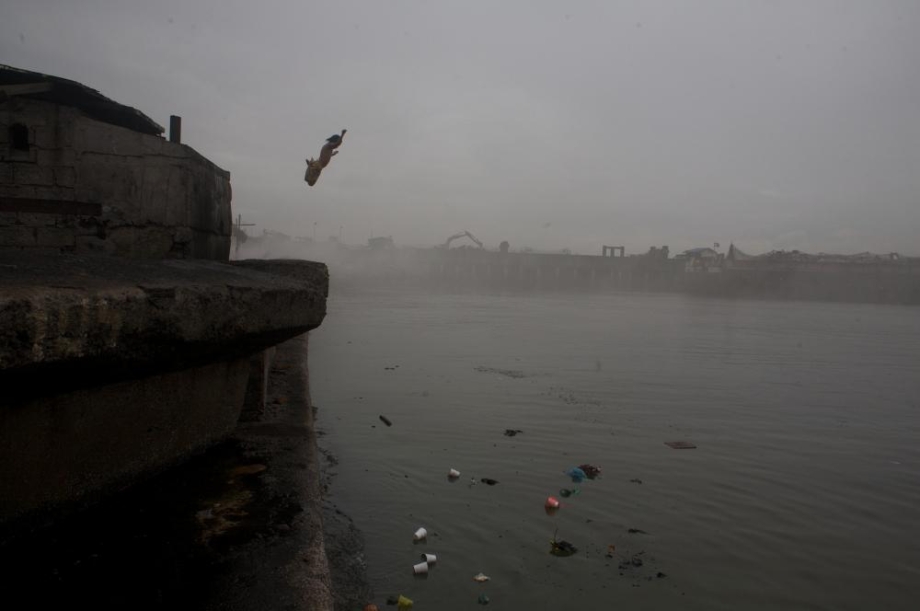

A young girl jumping into the polluted Pasig river after working the charcoal pits in the squatter community in the North Harbour of Manila, where families work as Ulingeros, or charcoal workers. Many of the workers in Ulingan are small children. Some are teenagers and a few were even as young as six or seven, unable to attend school because of poverty.
Charcoal Kids of Ulingan
Lisa Wiltse | Manila, Philippines
Photographer: Lisa Wiltse
Exhibit Title: Charcoal Kids of Ulingan
Location: Manila, Philippines
The Charcoal Project originates in the Ulingan community in Manila where thousands of Filipino urban slum dwellers live amid filth and swirls of toxic smoke, eking out a living making charcoal. The combined smell of the dense sea, burning charcoal, and decaying waste greets one at the mouth of the village, foreshadowing the extreme conditions within the community. I visited this community in 2008 and again in 2011, spending time with the families, developing relationships and documenting their living conditions which are entirely dependent on toxic charcoal production. What I discovered is that while charcoal production is a vital necessity in this community and in many other third world areas that have no other energy alternatives, the destructive ramifications of its production penetrate both locally and globally.
Three billion people, almost half of the world’s population, rely on wood, charcoal, and dung for cooking and heating purposes. Energy poverty is one of the least discussed aspects of our current energy challenge, yet it poses serious threats to economies, national security, the environment, and public health throughout the world.
The slums near Manila Bay are unhealthy enough—the Ulingans live next to a rubbish dump. But the rudimentary process of making charcoal in open pits next to the dump site exposes the squatters to even more harmful emissions such as carbon monoxide, nitrous oxide, and soot, as well as chemicals from burning treated wood. The result is a myriad of respiratory illnesses and heart disease. Estimates suggest that 60% of the population has tuberculosis while other lung problems and water-borne diseases are commonplace.
Children, who comprise a vital portion of the work force, labor without protective masks, gloves, or boots. Some are naked. They work and play in thick toxic smoke, dragging soggy scraps of wood scavenged from garbage dumps and construction sites. Groups of children scour areas of ash and soot searching for lucrative metal left exposed by continual burn off. Makeshift shelters constructed from tarpaulin and plastic are strewn across the landscape. Instead of going to school, children – usually young girls – have to spend hours collecting firewood to heat their homes to cook and to sell.
Lisa Wiltse
www.lisawiltse.com
917-436-3522
Make Comment/View Comments